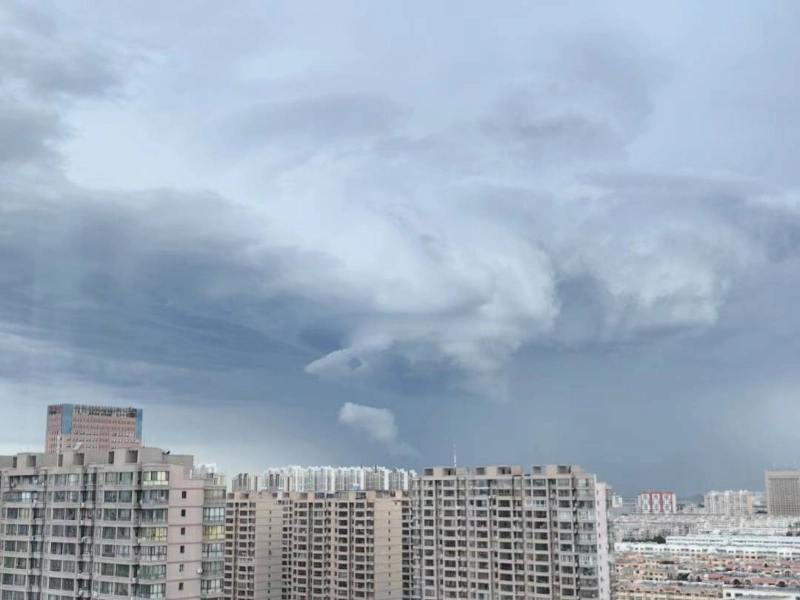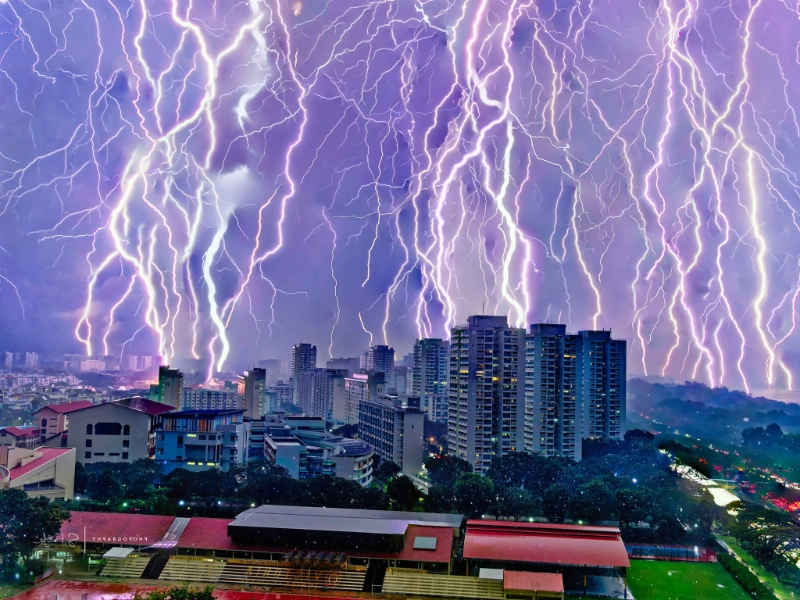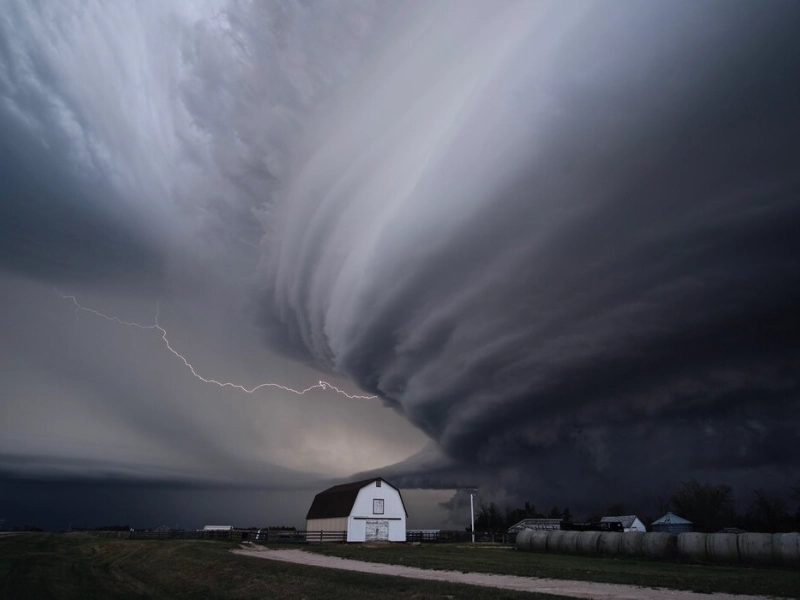Supercell Thunderstorms: Nature's Ultimate Storm Machine
Advertisement
5. Forecasting Supercells: Advances in Prediction and Warning Systems

Thanks to developments in technology, meteorological knowledge, and computer capability, one can now quite forecast supercell thunderstorms with accuracy. More accurate forecasts and earlier warnings resulting from these advances have helped to save perhaps many lives and minimise property damage. Forecasting supercells requires a sophisticated interaction of several meteorological instruments and approaches, each of which advances a more complete knowledge of extremely strong storms.
High-density numerical weather prediction models have been among the most important developments in supercell forecasting. These advanced computer simulations can now accurately detect possible areas of supercell development by resolving features on distances as tiny as 1-3 km, therefore enabling meteorologists to Models like the High-Resolution Rapid Refresh (HRRR) in the United States provide hourly updates of atmospheric conditions, therefore allowing forecasters almost real-time access of the changing weather situation. To provide a comprehensive view of the environment including the crucial elements driving supercell development, these models include enormous volumes of data from satellites, weather balloons, and meteorological stations.
Supercell forecasting and warning systems have also been much improved by Doppler radar technology. Early signals of possible tornado development come from modern dual-polarization radars detecting the rotation inside a mesocyclone of a supercell. These radars also provide useful data on the type and extent of precipitation inside the storm, therefore enabling meteorologists to evaluate the possibility for significant hail and destructive winds. Near-continuous coverage offered by the NEXRAD (Next-Generation Radar) network of stations scattered over the United States enables real-time observation of both nascent and continuing severe weather events.
With its bird's-eye perspective of growing storm systems, satellite images have become a vital tool in supercell forecasting. In some circumstances, geostationary satellites—like GOES-16 and GOES-17—offer high-resolution images updated as often as every thirty seconds. Often connected with the most severe supercells, this fast update cycle helps meteorologists watch the evolution of individual storm cells and identify important characteristics including overshooting tops and above-anvil cirrus plumes. Crucially important elements in supercell formation include atmospheric moisture content, instability, and wind patterns, which satellite data also offers.
New opportunities for supercell prediction have arisen from the combination of artificial intelligence and machine learning into weather forecasting. By examining enormous volumes of past meteorological data, these technologies can find trends and connections that might not be immediately clear-cut to human forecasters. Learning from past experiences will enable artificial intelligence systems to forecast the probability of supercell development and even project the possible for tornado generation inside these storms. Though still in its early years, the use of artificial intelligence in meteorology has significant potential to increase the accuracy and lead time of severe weather forecasts.
Notwithstanding these technical developments, supercell forecasting depends critically on human knowledge. Interpreting model outputs, radar data, and satellite imagery to make the ultimate judgement calls on issuing severe weather warnings depends on experienced meteorologists in particular. Their knowledge of local weather patterns, topography affects, and the subtleties of atmospheric dynamics helps to hone computer-generated forecasts. Combining the best of both worlds to offer the most accurate and timely warnings, the cooperation between human forecasters and advanced technology marks the front edge of supercell prediction.
Public communication and warning systems have advanced greatly thanks to better supercell forecasts. Many nations currently use a tiered system of watches and warnings to notify the population of the possibility for strong storms. For instance, the Storm Prediction Centre generates convective outlooks days ahead in the United States to show locations where conditions would be ideal for supercell growth. More particular watches and warnings are issued as the event approaches; tornado warnings now provide details on the projected course and strength of the tornado. These upgraded warning systems and better public knowledge of severe weather safety have helped to lower mortality from threats connected to supercells in recent years.
Advertisement
Recommended Reading:
The Strangest Beauty Pageants Through History →
You are viewing page 5 of this article. Please continue to page 6
Stay Updated
Actionable growth insights, once a week. No fluff, no spam—unsubscribe anytime.
Advertisement
You May Like

Hair Mistakes That Make Women Look Much Older Than They Are
07/29/2025

The Surprising Benefits of Sleeping Next to a Lemon
08/25/2025

Debunking the 8-Glass Rule: What Experts Want You to Know
08/26/2025

20 Luxurious Things From Dubai That Made Us Gasp
09/03/2025

Apricot Jam: The Taste of Summer Sunshine
06/16/2025

16 World-Famous Lightning Landmarks: A Must-Visit Pilgrimage
08/06/2025

21 Hotels That Can Make Anyone Want to Book the Next Flight
08/19/2025

Owners Were Shocked! The Amazing Changes After Pet Grooming
08/16/2025

Hilarious Award-Winning Wildlife Photos Proving Animals Have a Sense of Humor
08/07/2025

Experience the Thrill of the World's Fastest 10 Cars
06/20/2025

Nature's Perfect Timing: 15 Mind-Blowing Animal Photos You Can't Miss
06/11/2025

24 Pets Who Are Evolving Into Their Humans
08/15/2025

10 Incredible Cities That Have Changed Beyond Recognition
08/01/2025

19 Reddit Users Shared Their Best Secrets to Make Life Easier at Home
07/23/2025

Watermelon Diet: A Delicious Choice for Summer Weight Loss
06/09/2025

10+ Captivating Portraits of Women in Uniform
07/15/2025

Rare Historical Photos That Reveal the Unknown Past
08/07/2025

Wardrobe Woes: Hilarious Celebrity Outfit Blunders You Can't Unsee
07/25/2025

14 Unique Cat Breeds That You Don’t See Every Day
08/29/2025

Glamorous Unions: Memorable Celebrity Wedding Snippets
07/01/2025

Supercell Thunderstorms: Nature's Ultimate Storm Machine
06/19/2025

DIY Disasters: When Repairs Go Horribly Wrong
08/08/2025

25 Hilarious Photos that Show the Funny Side of Women's Tennis
08/17/2025

10 Unobvious Things to Do as Soon as You Enter Your Hotel Room
06/10/2025
Comments
ZephyrTactician · 07/05/2025
Offers pragmatic optimism.
EchoHarbor · 08/09/2025
This reframes a lot.
StellarSpindle · 08/09/2025
Raises standards quietly.